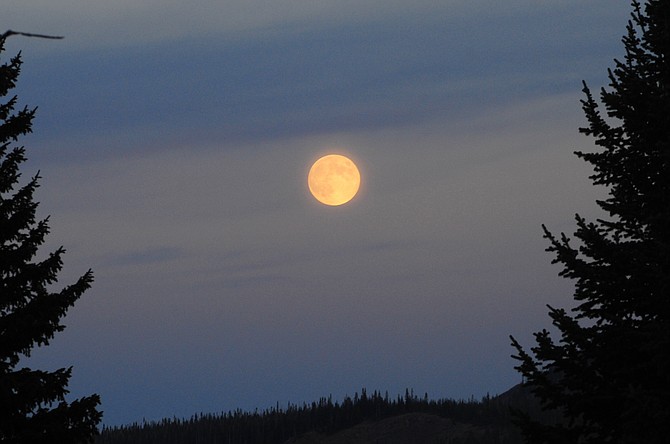Jimmy Westlake’s Celestial News column appears Tuesdays in the Steamboat Today and is reprinted below.

The season of autumn officially arrives for the northern hemisphere this year at 1:20 a.m. Wednesday, Sept. 23, Colorado time. Our season of autumn begins the instant that the sun crosses the equator on its way south.
Thanks to the 23.5º tilt of the Earth’s axis of rotation, the sun spends half of the year shining directly onto the northern hemisphere and the other half of the year shining directly onto the southern hemisphere. It reaches its highest point in our sky around June 21, the summer solstice, and its lowest point around Dec. 21, the winter solstice.
Separating these two extremes are two days during the year called the equinoxes, six months apart, when the sun shines directly down on the Earth’s equator. Equinox is a word that means “equal nights” and is used to describe these two special days of the year when every location on Earth experiences 12 hours of sunshine and 12 hours of darkness, and the sun rises exactly in the east and sets exactly in the west.
You might have noticed recently that the sun is rising later in the morning and setting earlier in the evening than it did in mid-summer and, if you are very observant, you also might have noticed that it is rising and setting much further to the south than it was in mid-summer.
Here in the northern hemisphere, we have just enjoyed six months of long, sun-filled days, but now, it’s the southern hemisphere’s turn. We are rapidly exchanging minutes of daylight for minutes of darkness each day as we move toward the December solstice. Then, the sun will begin moving northward and cross the equator again on the vernal equinox, around March 21, bringing spring with it.
Oh, and that business about balancing eggs and broomsticks only on the day of the equinox? That’s a myth. You can just as easily balance that egg and broomstick on any day of the year. But don’t take my word for it. Give it a try and see for yourself.
The first full moon of autumn traditionally is called the Harvest Moon and, this year, the moon is full just four days after the equinox. Watch for that big ol’ Harvest Moon rising over the eastern mountains just as the sun sinks below the western mountains on Sept. 27.
If you are the least bit observant, you’ll notice something unusual for several days surrounding the Harvest Moon. Normally, the moon rises about one hour later each night, but, during the Harvest Moon, it rises only about 25 minutes later each night for several nights in a row.
This means that a big, bright full moon replaces the sun and provides a little extra light after darkness falls. Farmers of yesteryear welcomed the extended hours of light, right at the peak time of harvesting the fields.
Some folks are convinced that the Harvest Moon looks much bigger than other full moons during the year. When seen near the horizon, the rising full moon can appear abnormally large in size.
How big does it look to you? As big as a pumpkin? Believe it or not, you can cover that giant Harvest Moon with the tip of your pinky finger held at arm’s length.
The moon’s bloated appearance when seen near the horizon is a famous optical illusion called the “moon illusion.” It is really no larger when seen near the horizon than when seen overhead. There’s something about holding up your pinky finger that magically shrinks that big full moon down to size. Give it a try.
This month, as an added bonus, the Harvest Moon will be totally eclipsed by the shadow of the Earth and the Harvest Moon will be a Super Moon as well. I’ll have more details about this fantastic total eclipse of the Harvest Super Moon in next week’s Celestial News.
Professor Jimmy Westlake teaches astronomy and physics at Colorado Mountain College’s Alpine Campus. His “Celestial News” column appears weekly in the Steamboat Today newspaper and his “Cosmic Moment” radio spots can be heard on local radio station KFMU. Check out Jimmy’s astrophotography website at www.jwestlake.com.
